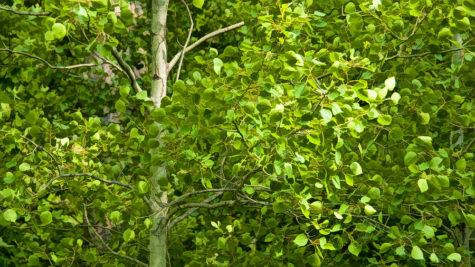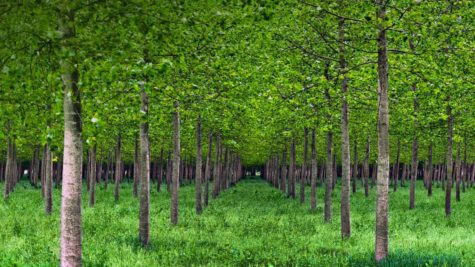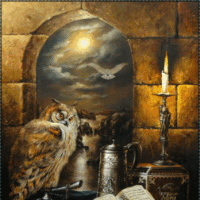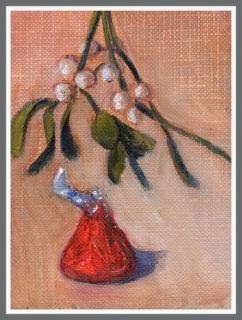The Poplar or Aspen is the sacred Tree of the Fall Equinox – (Aprox. September 22).
There is a bit of confusion about poplar, aspen, and cottonwood trees. The tree referred to here is the genus “populus” which includes true poplars, as well as related trees such as cottonwood and aspen).
Here’s a quick list:
- Balsam Poplar (Populus balsamifera)
- Eastern Cottonwood (Populus deltoides)
- Bigtooth Aspen (Populus grandidentata)
- Black Poplar (Populus nigra)
- European Aspen (Populus tremula)
- Quaking Aspen (Populus tremuloides)
- Black Cottonwood (Populus trichocarpa)
As far as I could discover, the Aspen and Poplar tree magickal lore overlap, and can be used interchangeably, unless otherwise indicated. The lore does not refer to the Yellow Poplar (Liriodendron tulipifera), or Balm of Gilead (Populus candicans) which have different attributes and magickal qualities
- Celtic name: Eadha (pronounced: “Eh’ uh”).
- Folk or Common names: All Poplar – Popple, Alamo, Aspen; Trembling Poplar – American Aspen, White Poplar, or Quaking Aspen; Balm of Gilead – bombagillia.
Magickal Usage:
- Ruler: Saturn
- Type: Plant
- Magickal form: Buds
Carry poplar buds with you when seeking employment. Crush and add them to traditional money incense when you work on commission and need to attract more funds. The poplar buds may also be added to divination blends and make a great ingredient for psychics wishing to attract more business, as well as improving their powers.
The Poplar’s ability to resist and to shield, its association with speech, language and the Winds indicates an ability to endure and conquer. The Poplar is known as the “Tree that Transcends Fear”. Poplars symbolize the magick of joy, the aging of the year, resurrection and hope – and are connected to the Otherworld. Poplar can be used in magick done for success, passage and transformation, Hope, rebirth, divinations, shielding, endurance, agility in speech and language, protection, and love – and as an aid in astral projection.
Poplar can be used in protection charms of all kinds. Poplar is a good wood to burn in balefires and ritual fires since it offers protection. Shields can be made of Poplar since the wood is thought to offer protection from injury or death. Carrying Poplar helps to overcome the urge to give way under the burden of worldly pressures, and aids in determination. Poplar buds can also be carried to attract money and can be burned as an incense to create financial security.
Siberian reindeer-hunting cultures carved small goddess statues of Poplar (Aspen) wood. Groats and fat were then offered to the figures with this prayer:
“Help us to keep healthy!
Help us to hunt much game!”
Poplar buds are also sometimes added to flying ointments and was also used in astral travel. A medieval recipe for a flying ointment called for Cinquefoil, Poplar leaves, soot and bat’s blood obtained at the wake of the new moon.
The trembling leaves of the Poplar tree can be ‘read’ to divine messages from the God and Goddess, and also from spirits that drift into woods. The Poplar is the sacred World Tree of the Lakota nation. For the sun dance ceremony, a Poplar is carefully cut and lowered, then is re-erected in the center of the dance circle. While being carried the Poplar must never touch the ground. Green branches, a buffalo skull and eagle feathers were used to decorate the Poplar for this ceremony.
Aspen Lore:
A country name for the aspen is the Shivver-tree, a name which in some districts is also given to the poplar. The leaves of both trees tremble at the slightest stirring of air, so that they seem to move without ceasing when all around is still. Because of this, both trees were formerly credited with the power to cure agues and fevers.
A very old magical tradition held that ailments could most efficaciously be treated by something that resembled their effects; and since ague causes the patient to shake and tremble, he was likely to be healed by the shaking tree.
In his Folk-Lore of the Northern Counties, William Henderson relates the story of a Lincolnshire girl who was thus cured of ague. She was advised to pin a lock of her hair to an aspen, saying as she did so:
“Aspen tree, aspen tree,
I prithee to shake and shiver
Instead of me.”
As was usual in such charms, her journey home had then to be made in complete silence, otherwise the magic would not work. She followed the advice given, and many years later, when she was an old woman, she told Henderson’s informant that she had never been troubled with ague again.
Another method was to bore a small hole in the tree trunk, insert the patient’s nail parings, and close the hole securely. As the bark grew once more over the opening, so the disease would disappear.
Two widespread legends are told to account for the aspen’s trembling. One is that it was condemned to shiver thus for evermore because it was the only tree that would not bow down to Our Lord when He passed through the forest. The other is that it shudders perpetually with horror because its wood was used to make the Cross on Calvary.
Poplar Lore:
 The poplar shares with the aspen the country name of Shivver-tree because like those of the latter, its leaves tremble. It also shares, and for the same reason, the aspen’s power to cure agues and fevers. R.M. Heanley records a Lincolnshire charm in which the patient cut off a lock of his hair and wrapped round a black poplar branch, saying as he did so:
The poplar shares with the aspen the country name of Shivver-tree because like those of the latter, its leaves tremble. It also shares, and for the same reason, the aspen’s power to cure agues and fevers. R.M. Heanley records a Lincolnshire charm in which the patient cut off a lock of his hair and wrapped round a black poplar branch, saying as he did so:
When Christ our Lord was on the Cross,
Then didst thou sadly shivver and toss.
My aches and pains thou now must take,
Instead of me I bid thee shake.
He then had to go straight home, speaking to no one on the way, after which he would be free from ague forever. Heanley adds that some people considered it necessary to fast for twelve hours before attempting this charm.
The constant shaking of the poplar is often accounted for by the legend that its wood was used in the construction of the Cross. Medieval Legends of Christ (1934), mentions two explanatory legends. One is that it was under a poplar that Our Lord prayed during His agony in the Garden of Gethsemane, and that the tree has trembled in sympathy ever since. The other is that it was cursed because, alone among the trees, it refused to mourn at the Crucifixion, saying that Christ died for sinners, “but I am innocent, and His suffering is no concern of mine.”
Poplar leaves were supposed to be one of the ingredients of the witches’ flying ointments.
Magical History and Associations:
In Gaelic tongue the tree was called Peble and Pophuil in the celtic way. Poplar is generally a plant of Jupiter, Saturn and the Sun and is associated with the element of water. Its color is rufous (red) and the bird associated with Poplar is the Whistling Swan. The stones associated with Poplar are Amber, Citrine Quartz, Sapphire and Swan Fluorite. The Anglo-Saxon rune poem seems to refer to the Poplar as being associated with the rune “berkano”.
Heracles wore a crown of Poplar leaves in triumph after killing the giant Cacus (the evil one) and retrieving Cerberus from Hades. The upper surface of the Poplar leaves was thus darkened from Hades’ smokey fumes. Poplar trees are sacred to the Mesopotamian goddess Ua-Ildak. The Grass King of Grossvargula, who was seen as having fertilizing powers, went on horseback wearing a pyramid of Poplar branches and a crown. He led a procession of young men about the town and was then stripped of his branches beneath the Silver Lindens of Sommerberg.
Poplar (Aspen) is said to be the tree of the Autumn Equinox and of old age, and is known as the shield makers’ tree. The Black Poplar was a funeral tree sacred to Hecate as death goddess, to Egeria, and to Mother Earth. Plato makes a reference to the use of Black Poplar and Silver Fir as an aid in divination. The Silver Fir standing for hope assured and the Black Poplar for loss of hope. The Grove of Persephone in the Far West contained Black Poplars and old Willows.
In ancient Ireland, the coffin makers measuring rod was made of Aspen, apparently to remind the dead that this was not the end. In Christian lore, the quaking Poplar (Aspen) was used to construct Christ’s cross, and the leaves of the tree quiver when they remember this fact.
Herbal usage:
Poplar can be used as a tonic, chiefly used in treating fevers. The infusion has been found helpful in treating chronic diarrhea. The sap collected from the buds can be used to make a healing ointment and can be used as an external application in bruises, swellings, and some skin diseases. Teas can be made from the Poplar buds and are useful in helping treat arthritis and rheumatism.
Source: Dutchie.org
- Bean Magick and Lore by shirleytwofeathers - 6 Comments
- Purple Loosestrife Magick and Lore by shirleytwofeathers - 5 Comments
- Onion Magick and Lore by shirleytwofeathers - 4 Comments
- Magickal Uses of Mud Dauber Dirt by shirleytwofeathers - 4 Comments
- Herbs by Gender by shirleytwofeathers - 4 Comments
Michaela Renee Solomon: Bean Magick and Lore
Alex Jinn: Holy Water
Lilith Linlithgow: AZaJ2zpS1xg
Tina from Magickal Spot: Ingwaz Rune Magick
Tina from Magickal Spot: Thurisaz Rune Magick








Leave a Reply